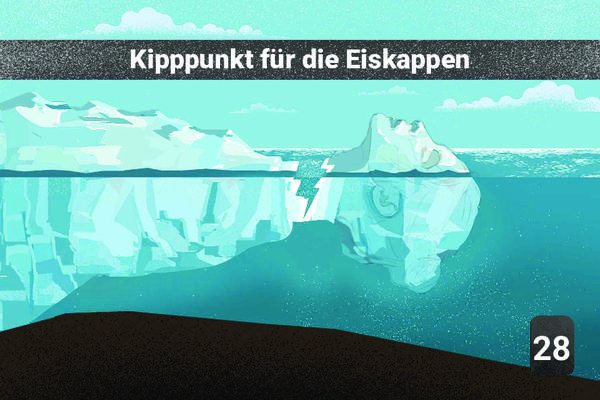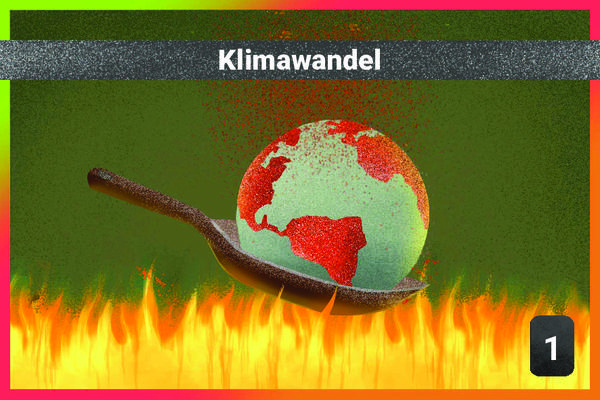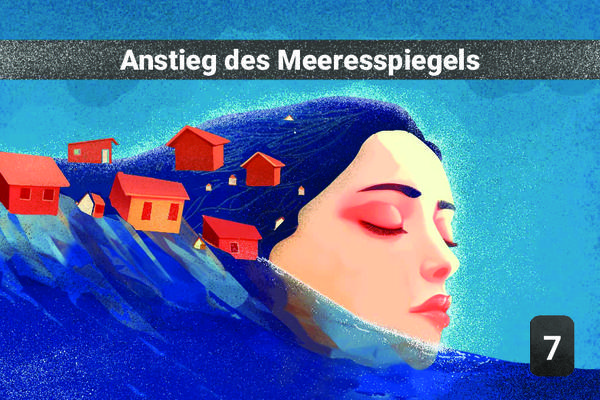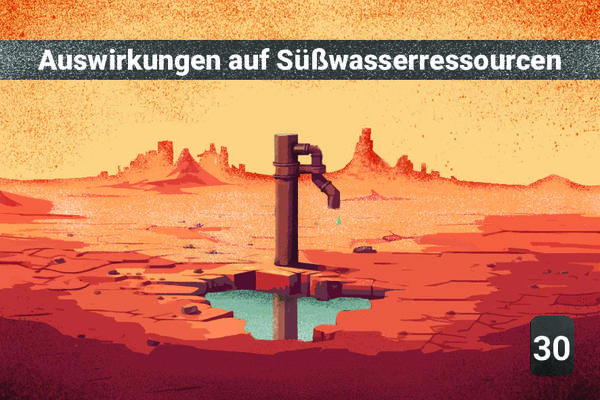28 - Tipping point for the ice caps

✏️ Diese Erklärung ist in deiner Sprache noch nicht verfügbar, Hier klicken um deine Übersetzung vorzuschlagen oder schreibe eine E-Mail an fdn.memo@marc-antoinea.fr.
Ice caps (also called Inlandsis) are glaciers with an area > 50,000 km2. On Earth there are 2: the Antarctic ice sheet and the Greenland ice sheet. Antarctica represents 90% of the Earth's ice (it is the largest reserve of water on the planet), and has an average thickness of more than 2000m. Greenland represents 10% of fresh water resources, and at a thickness of up to 3000m.
1Ursache
Climate change leads to melting of ice caps (= very large glaciers). The poles are the regions of the world where the impacts of climate change are most visible, temperatures are warming faster there and ice melting is accelerating. A tipping point leading to the complete disappearance of Greenland and West Antarctica is not established, but not impossible. We are not talking about glaciers here, even if they are also impacted by global warming.
1Auswirkung
The complete melting of Greenland would cause a rise of 7m. The complete melting of Antarctica would cause a rise of 54m. If it is "only" West Antarctica, then this could result in a rise of 2-5m. Or a total elevation "Greenland + West Antarctica" of 9 to 12m in the event of total melting. However, these figures correspond to very distant time scales well after 2100 (several hundreds, thousands of years). The projections for 2100 according to the IPCC are rather of the order of 50 to 80cm for the most probable, without excluding the beginning of a tipping point which could lead to an overall rise of 1.7m. Since 2009, Antarctica has lost more than 250 billion tonnes of ice each year. In the 1980s, it was 40 billion tonnes (6 times less).
1Andere mögliche Auswirkung
If we consider that this map also includes glaciers, then there is indeed an impact on fresh water resources: the glaciers of the Hindu Kush and the Himalayas provide drinking water to 250 million people spread across 8 country of the world. By 2100, more than 2/3 of them could have melted, which will cause floods and then shortages of fresh water: the large rivers such as the Huang Hue (Yellow River), the Yangtze, the Brahmaputra, 'Indus and the Ganges will no longer carry much water in summer, which supply Bangladesh, Pakistan and northern India.



